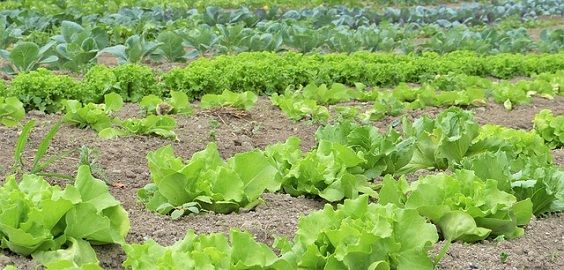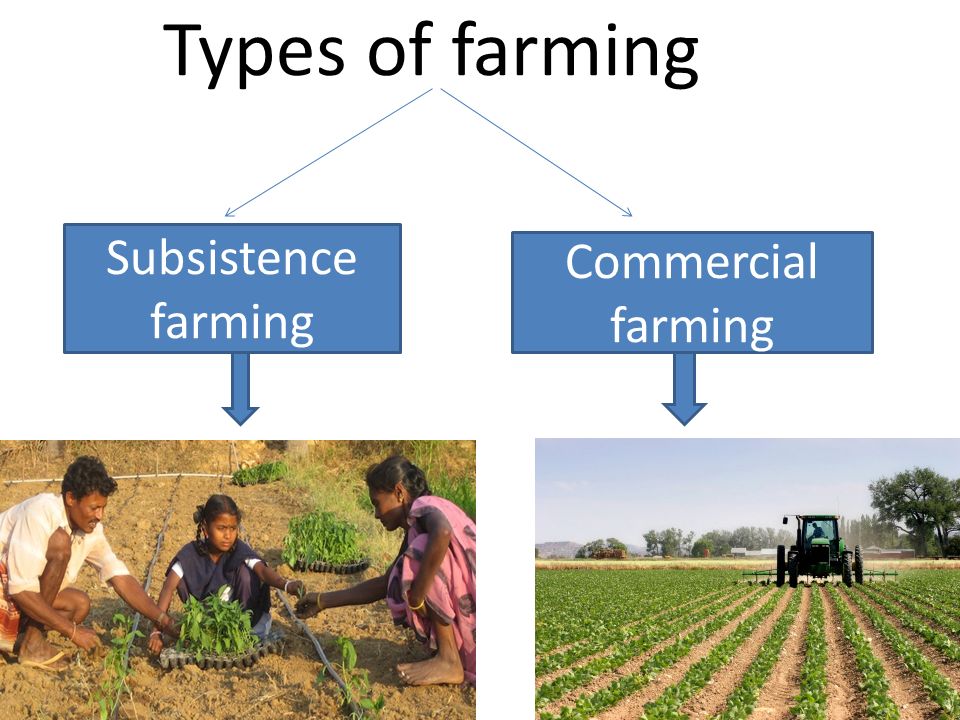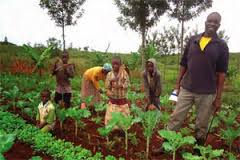How Commercial Farming vs Subsistence Farming Influences Food Security Worldwide
How Commercial Farming vs Subsistence Farming Influences Food Security Worldwide
Blog Article
A Thorough Take A Look At the Obstacles and Benefits of Modern Farming
Modern farming stands at the crossroads of technology and sustainability, presenting a multitude of opportunities and obstacles. With advancements like accuracy farming and biotechnology encouraging boosted efficiency, the field concurrently grapples with critical problems such as environmental deterioration and socio-economic disparities. As we check out the intricate balance in between technological progress and its more comprehensive effects, the concern occurs: can we accomplish a sustainable future that profits both the environment and farming communities? The course onward requires a cautious exam of these characteristics, welcoming stakeholders to think about the possibility for transformative adjustment in farming practices and plans.
Technological Advancements in Farming
Advancements such as accuracy agriculture, automation, and biotechnology have transformed typical farming methods, allowing for even more profitable and sustainable operations. Accuracy agriculture uses GPS innovation, sensing units, and information analytics to optimize field-level management pertaining to crop farming.
Automation in farming has even more pushed the industry onward, with the introduction of self-governing tractors, drones, and robotics. These innovations reduce labor demands and increase operational speed, enabling prompt planting and harvesting. Drones, specifically, give useful aerial images and data, aiding farmers in monitoring crop health and finding problems early.
Biotechnology has actually likewise played a critical role in progressing agricultural practices. Jointly, these technical developments have laid the foundation for a much more durable and sustainable agricultural future.
Environmental Obstacles
Agriculture encounters a number of environmental obstacles that threaten its sustainability and performance. Among the primary concerns is the destruction of dirt health due to extensive farming practices that diminish necessary nutrients and result in disintegration. The overuse of chemical fertilizers and chemicals further worsens this issue, polluting water resources and decreasing biodiversity. Subsequently, the long-term feasibility of agricultural land is jeopardized, necessitating the adoption of more lasting techniques.
Water deficiency is another significant difficulty, particularly in areas where farming greatly depends on watering. Environment modification is intensifying this problem, changing rainfall patterns and boosting the regularity of dry spells. Reliable water monitoring systems, such as drip watering and rain harvesting, are crucial to mitigate these effects, however their application stays unequal throughout various areas.
Additionally, farming is both a factor and a sufferer to environment adjustment. It makes up a significant share of greenhouse gas exhausts, primarily from animals manufacturing and rice cultivation. Transitioning to low-emission agricultural methods, such as precision farming and agroforestry, can aid reduce this impact. Nevertheless, these techniques need considerable financial investment and technological proficiency, presenting an obstacle to extensive adoption. Dealing with these environmental difficulties is important for guaranteeing a sustainable agricultural future.

Economic Influences
The financial effects of modern agriculture are extensive and complex, influencing both local and international markets. Developments in technology and manufacturing methods have actually considerably increased farming productivity, causing much more reliable food supply chains and minimized costs for consumers. This enhanced efficiency has actually allowed countries to satisfy expanding demands, maintain food costs, and add to economic growth. In addition, the export of farming commodities has become a considerable source of income for several countries, playing a critical role in their financial growth.
Nonetheless, these advantages are not without challenges. The capital-intensive nature of contemporary agriculture calls for substantial investment in machinery, fertilizers, and genetically changed seeds, which can be monetarily burdensome for small-scale farmers. This typically leads to boosted financial debt and economic susceptability, possibly causing the combination of farms and the loss of rural incomes. Furthermore, global market changes can impact the success of agricultural exports, making economies reliant on agriculture susceptible to economic instability.
Additionally, aids and profession policies in established nations can misshape market value, influencing competitive equilibrium and potentially disadvantaging farmers in creating countries. Generally, while modern farming drives financial growth, it additionally requires browsing complicated financial landscapes to make certain lasting and equitable advancement.
Social Effects
While modern agriculture has actually brought around significant developments, it likewise provides different social effects that warrant consideration. As corporate farming entities significantly control the agricultural landscape, smaller farms typically have a hard time to contend, leading to the disintegration of country communities and traditional farming techniques.

Furthermore, there are worries about food security and sovereignty. The focus on monoculture and genetically modified plants can threaten biodiversity and make food systems more at risk to insects and conditions. Such practices could additionally limit consumer selections and minimize the capability of local areas to regulate their food sources. As these social ramifications unfold, it comes to be crucial to resolve them to make sure fair and lasting agricultural development.
Future Instructions
Looking in advance, a number of encouraging avenues for modern-day agriculture could address the challenges dealt with today while fostering sustainable development. Advances in innovation, such get redirected here as accuracy agriculture, offer the prospective to enhance resource usage and increase efficiency.
Biotechnology additionally holds enormous pledge for the future of agriculture. Genetically customized organisms (GMOs) and gene modifying techniques, like CRISPR, might enhance plant resilience against environment change, bugs, and illness, hence boosting food protection. Moreover, diversifying plant ranges to include more climate-resilient and nutrient-dense options can strengthen both eco-friendly stability and human nutrition.

Conclusion
Modern farming, identified by technical improvements, provides both obstacles and possibilities. While advancements such as accuracy farming and biotechnology improve efficiency and sustainability, they also contribute to ecological concerns like dirt deterioration and water scarcity. The economic impacts are substantial, influencing small-scale farmers and leading to broader social effects. Addressing these intricacies needs a shift towards sustainable methods that balance productivity with environmental stewardship and social equity, therefore making certain a resistant future for worldwide agricultural systems.
Modern agriculture stands at the crossroads of development and sustainability, presenting a plethora of obstacles and opportunities. Furthermore, global market changes can impact the earnings of agricultural exports, making economic situations reliant on agriculture at risk to economic instability.
Additionally, the extensive use of innovation and automation in agriculture has actually led to a decrease in farming employment chances.Looking ahead, a number of promising methods for modern farming could attend to the obstacles encountered today while fostering sustainable development. commercial click for more farming vs subsistence farming.Modern agriculture, defined by technological improvements, provides both challenges and chances
Report this page